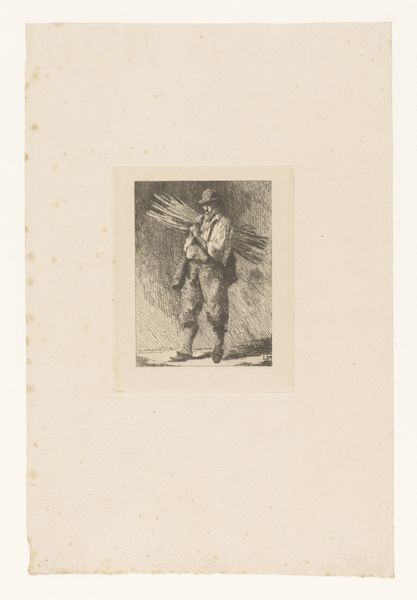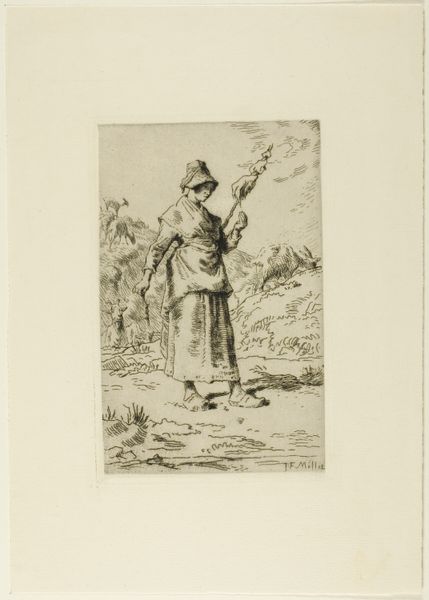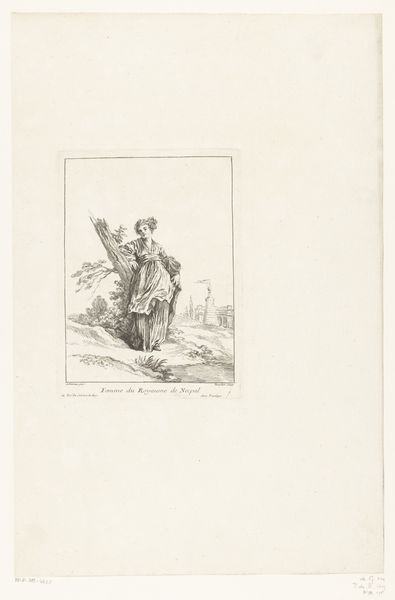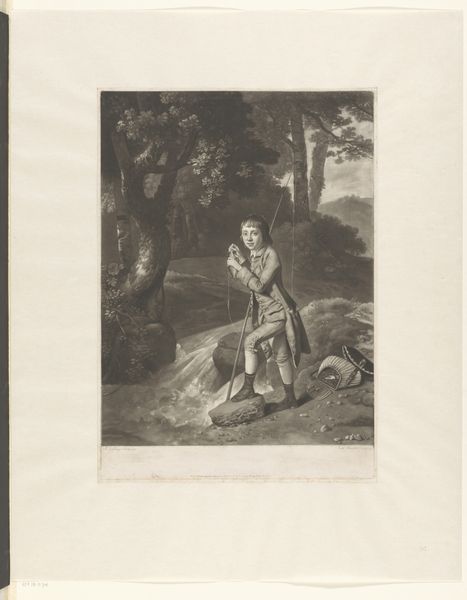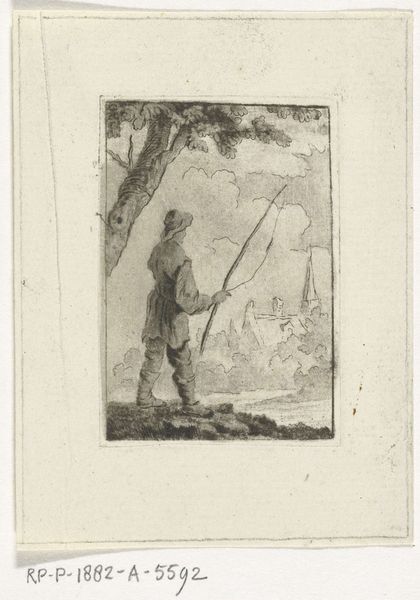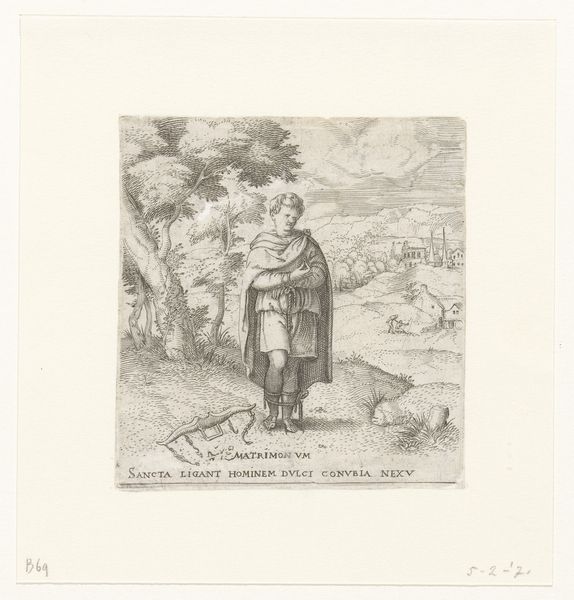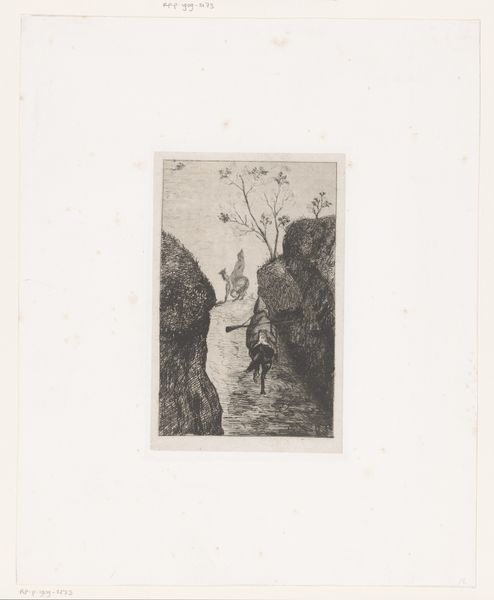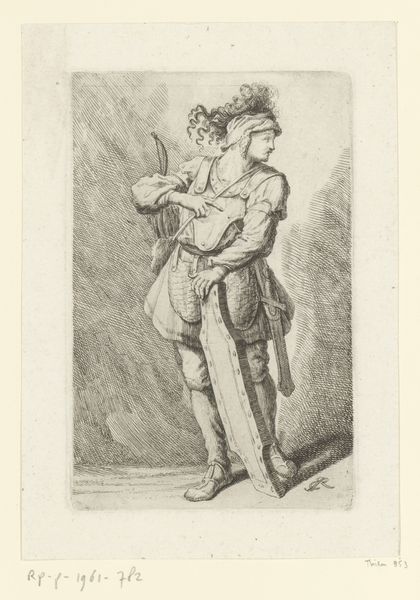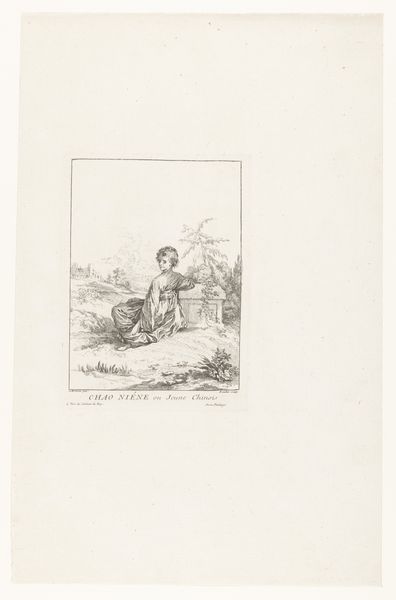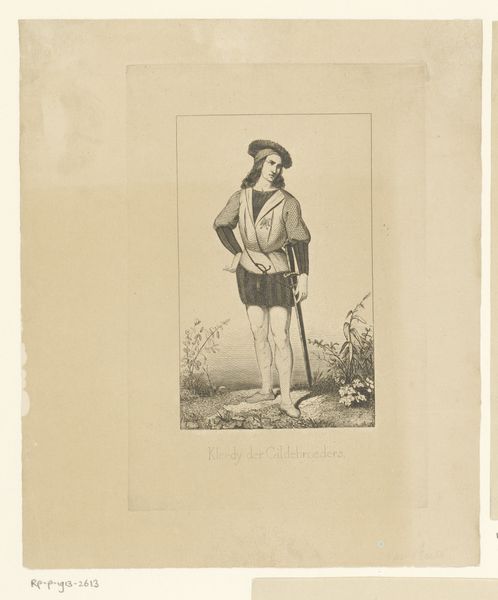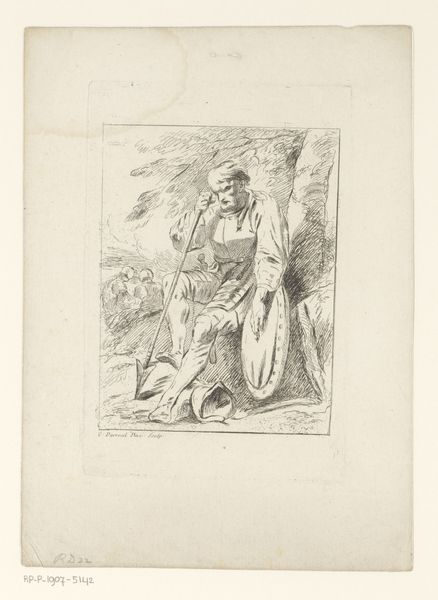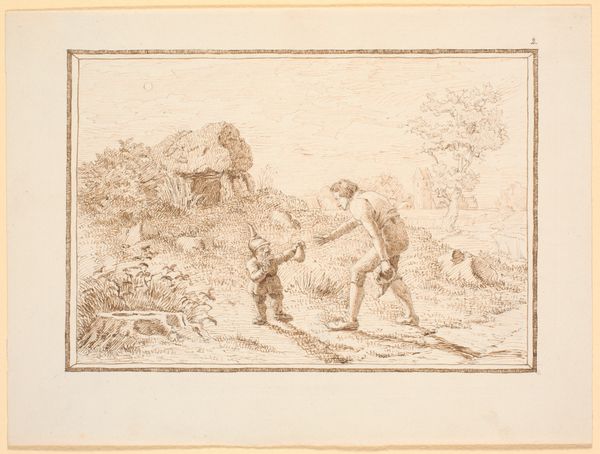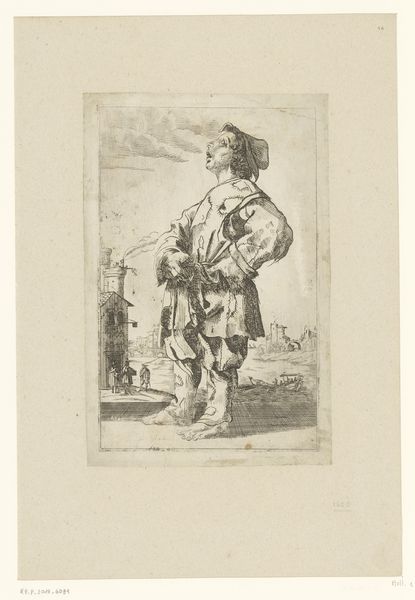
Jongen met een vlindernet steekt een vlinder op zijn hoed 1849 - 1909
0:00
0:00
drawing, print, etching, paper
#
portrait
#
drawing
# print
#
etching
#
landscape
#
paper
#
genre-painting
#
realism
Dimensions: height 200 mm, width 142 mm
Copyright: Rijks Museum: Open Domain
Curator: This is a fascinating print titled "Jongen met een vlindernet steekt een vlinder op zijn hoed," which translates to "Boy with a Butterfly Net Sticking a Butterfly on His Hat." It's an etching on paper from the period between 1849 and 1909, currently held in the Rijksmuseum collection. The artist is Lionel Oscar Baes. Editor: It’s a striking image. The monochromatic etching emphasizes a somber mood; the figure is hunched, absorbed by his actions against a landscape rendered in delicate tonal gradations. Curator: It really draws you in, doesn't it? As a genre painting, the scene reflects the times, tapping into broader anxieties of the late 19th century regarding nature, childhood, and innocence. The capture of butterflies as a scientific, hobbyist practice mirrors contemporary power dynamics, specifically mankind's dominion over the natural world. This echoes the impact of colonial expansion, exploitation, and industrial growth of the time. Editor: The interplay between figure and landscape seems quite intentional. Notice how the curve of the hill behind the boy is subtly echoed in the slope of his shoulders, creating a sense of being grounded within his surroundings, while he's actively extracting and preserving part of it. Semiotically, you can read his hat and the act of pinning as claiming and classification, ordering nature to reflect a certain vision. Curator: Absolutely. And perhaps it reflects societal pressures of the era to catalogue, collect, control. Even something as seemingly innocent as butterfly collecting became symptomatic of broader social structures that valued accumulation and power over nature. The act of impaling the butterfly can be read as a loss of freedom or agency within society. Editor: It’s a clever paradox. There is the boy’s evident focus and delicate precision, carefully captured by the etching. The eye is guided, via the angling light on his cap, to the dark butterfly awaiting the pinprick of "capture," contrasted with a far less precise or clear execution of the foliage background. A certain tension arises, wouldn’t you say? Curator: The choice of the artist to depict such a commonplace activity lends to its realism. But there's this haunting sense, particularly with our understanding of environmentalism today, that underscores our role in a larger, perhaps destructive cycle of subjugating natural life. It urges a reconsideration of innocence, industrial impact, and our ever-evolving relationship with the environment. Editor: A haunting visual indeed. A superb etching in how it elicits a multilayered, structural, emotional, and ecological unease from a deceptively "simple" portrait, as is typical with semiotic structures that expose underlying, sometimes disturbing assumptions. Curator: Well said. It demonstrates how even seemingly benign activities can carry complex and sometimes unsettling social, historical, and personal implications. Thank you for offering a new lens to appreciate Baes’s approach.
Comments
No comments
Be the first to comment and join the conversation on the ultimate creative platform.
